Kingdom Fungi Higher classification Piptoporus | Phylum Basidiomycota Scientific name Piptoporus betulinus Rank Species | |
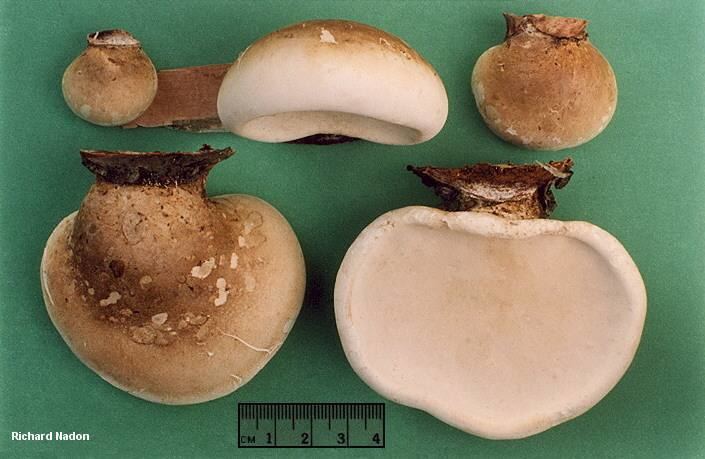 | ||
Similar Piptoporus, Fomes fomentarius, Fomitopsis pinicola, Fomes, Polyporus | ||
Bushcraft piptoporus betulinus or razor strop fungi
Piptoporus betulinus, commonly known as the birch polypore, birch bracket, or razor strop, is one of the most common polyporous bracket fungi and, as the name suggests, grows almost exclusively on birch trees. The brackets burst out from the bark of the tree, and these fruiting bodies can last for more than a year. Technically, it is an edible mushroom, with a strong, pleasant "mushroomy" odor but a bitter taste. The velvety cut surface of the fruiting body was traditionally used as a strop for finishing the finest of edges on razors. It is also said to have medicinal properties.
Contents
- Bushcraft piptoporus betulinus or razor strop fungi
- Description
- Range and ecology
- Properties of chemical constituents
- References

Description

The fruiting bodies (basidiocarps) are pale, with a smooth greyish-brown top surface, with the underside a creamy white and with hundreds of pores that contain the spores. The fruiting body has a rubbery texture, becoming corky with age. Wood decayed by the fungus, and cultures of its mycelium, often smell distinctly of green apples. The spores are cylindrical to ellipsoid in shape, and measure 3–6 by 1.5–2 μm.
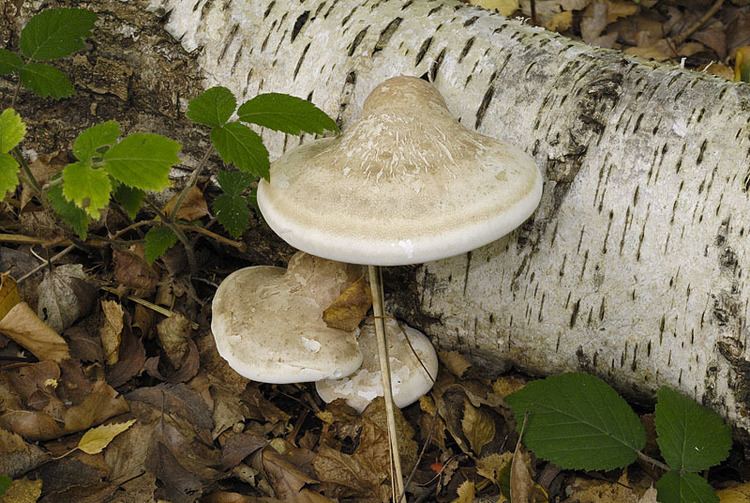
P. betulinus has a bipolar mating system where monokaryons or germinating spores can only mate and form a fertile dikaryon with an individual that possesses a different mating-type factor. There are at least 33 different mating-type factors within the British population of this fungus. These factors are all variants or alleles of a single gene, as opposed to the tetrapolar mating system of some other basidiomycete species, which involves two genes.
Range and ecology
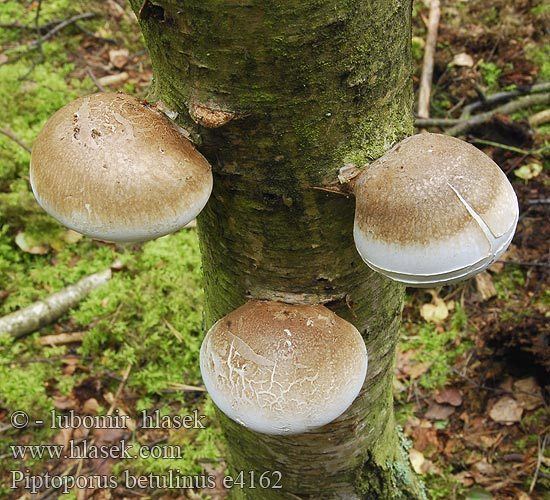
The geographic distribution of Piptoporus betulinus appears to be restricted to the Northern Hemisphere. There is some doubt about the ability of isolates from the European continent, North America and the British Isles to interbreed.
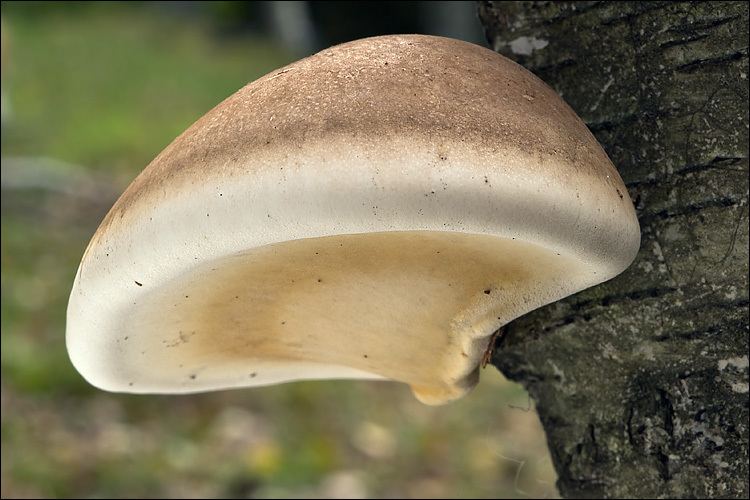
It is a necrotrophic parasite on weakened birches, and will cause brown rot and eventually death, being one of the most common fungi visible on dead birches. It is likely that the birch bracket fungus becomes established in small wounds and broken branches and may lie dormant for years, compartmentalised into a small area by the tree's own defence mechanisms, until something occurs to weaken the tree. Fire, drought and suppression by other trees are common causes of such stress.
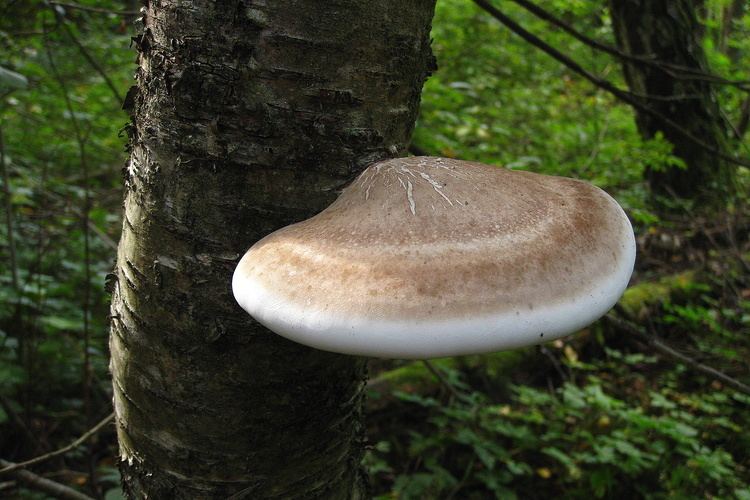
In most infections there is only one fungal individual present, but occasionally several individuals may be isolated from a single tree, and in these cases it is possible that the birch bracket fungus entered after something else killed the tree. These fungal "individuals" can sometimes be seen if a slice of brown-rotted birch wood is incubated in a plastic bag for several days. This allows the white mycelium of the fungus to grow out of the surface of the wood. If more than one individual dikaryon is present, lines of intraspecific antagonism form as the two individual mycelia interact and repel each other.
The fungus can harbor a large number of species of insects that depend on it for food and as breeding sites. In a large-scale study of over 2600 fruit bodies collected in eastern Canada, 257 species of arthropods, including 172 insects and 59 mites, were found. The fungus is eaten by the caterpillars of the fungus moth Nemaxera betulinella.
Properties of chemical constituents
Piptoporus betulinus has anti-inflammatory compounds and antibacterial properties.
Polyporenic acid found in the fruit body of the fungus, is poisonous to the parasitic whipworm Trichuris trichura.
The fungus was carried by "Ötzi the Iceman" – the 5,000-year-old mummy found in Tyrol.
